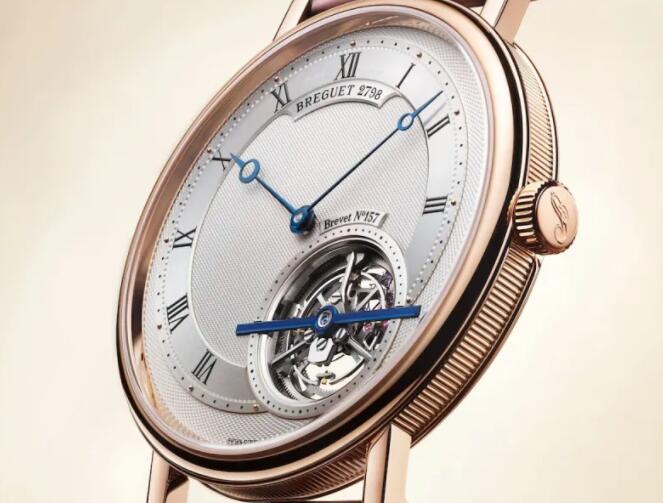
Breguet Classique Tourbillon Extra-Plat Anniversaire 5365

On June 26, 1801, or rather on 7 Messidor, year IX, since the Republican calendar was still used in France, Abraham-Louis Breguet secured a patent in Paris for his “watch compensating for all of the inequalities that may be found in the balance wheel and mainspring”. He named the invention the “tourbillon” (or “whirlwind”). 220 years later, the House of Breguet is paying homage to its founder’s invention with the Breguet Classique Tourbillon Extra-Plat Anniversaire 5365.
Limited to 35 models, this watch celebrates the timeless aesthetic and visionary genius of the master-watchmaker. The engine-turning method, also known as guillochage, possesses very specific watchmaking features. By offering surfaces with finely worked irregularities, the technique allows light to be captured in a variety of ways, ranging from clarity to a more matte finish. Light captured in this way enables the different reading zones on the gold dial to be clearly marked. Engine-turned surfaces are protected from damage. The piece is housed in a 41-millimeter rose gold case.
The Clous de Paris takes up the entire central part of the timepiece. Handmade with a diamond chisel, it is created by interlacing engraved and crossed lines with a pitch of only 0.25 millimeters. From a distance of 50 centimeters, it seems to have a matte finish. This makes it easier to read the hours and minutes, indicated by the two central blued steel off-center open-tipped hands, now known as “Breguet hands.” On the periphery, the piece is garnished with a grain d’orge motif. On the rear of the piece, the platinum rotor is engine-turned with a wave motif.
Breguet has fitted its reference Breguet Classique Tourbillon Extra-Plat Anniversaire 5365 with a 60-second tourbillon, visible between 4 and 6 o’clock, with one of these axes showing the seconds. The piece’s upper bridge is made of blued steel, and the cartouche affixed above the tourbillon bears the text “Brevet No 157” a reference to the patent number awarded to Abraham-Louis Breguet for his invention a mere 220 years ago.
The rear of the watch features the engraving “Anniversaire 1801–2021” on the barrel, and “Brevet No 157 Du 7 Messidor An IX” upon the lower bridge of the tourbillon, alongside the individual number of each piece. To the right of the movement, there is a reproduction of the original watercolor plate used by Abraham-Louis Breguet when filing his 1801 patent application for a tourbillon regulator.